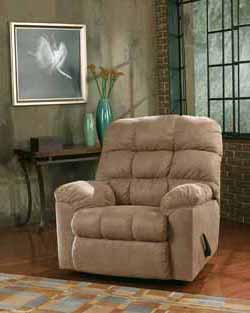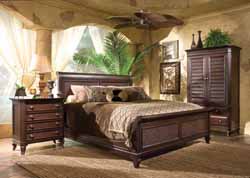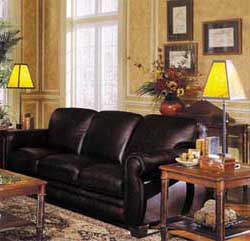 Many remember the wallpapers of the 1960s and 1970s, when bright geometric patterns, pop-art designs and vinyl were all the rage. But by the mid-'80s, wallpaper slowly began to fall out of favor. Instead, homeowners stripped their walls, opting for a more minimalist look.
Many remember the wallpapers of the 1960s and 1970s, when bright geometric patterns, pop-art designs and vinyl were all the rage. But by the mid-'80s, wallpaper slowly began to fall out of favor. Instead, homeowners stripped their walls, opting for a more minimalist look.
According to the Wall Covering Association, the downward trend for wallpaper took a noticeable plunge in the mid-'90s when homeowners began painting their walls in neutral colors.
Now, wall coverings have once again come into vogue.
Helping this trend gain momentum is the high-end interior design community. Today's designers are realizing that well designed interiors should include a variety of wall treatments: painted walls, faux finished walls, and wall covering. Designers are re-acquainting themselves with the array of options available in wall coverings. The choices are almost endless and the impact almost limitless.
 In addition, tremendous technical, design innovations have been made in the wall covering industry in the past ten years. Wall covering manufacturers today offer so much more than what was available to your grandmother's generation. Designers certainly have taken notice.
In addition, tremendous technical, design innovations have been made in the wall covering industry in the past ten years. Wall covering manufacturers today offer so much more than what was available to your grandmother's generation. Designers certainly have taken notice.
Timeless, classic wall covering designs are being rediscovered by "main stream America." Traditional homes are once again enhanced by classic stripes, damasks, and toiles. Contemporary environments are embracing retro geometrics and bright color.
Designers say the right wallpaper can make a room appear larger or a ceiling feel higher. Wallpaper can add interest where there are no architectural features, and it can help disguise damaged walls and other structural imperfections. Paper can bring out a homeowner's personality and create atmosphere. And there are enough choices, including large-scale graphics, metallics, silks, linens, velvet flocking, leather, grass cloth, bamboo, lacquer and burlap, to please almost any taste. Some faux-finish designs resemble silk, suede or marble, and others mimic metal, natural stone or brick.
 And talk about versatility: Use wallpaper on all four walls, one accent wall or just the ceiling. Paper the inside of a closet or kitchen cabinets or use paper to line shelves. Frame leftover pieces for use as art on painted walls.
And talk about versatility: Use wallpaper on all four walls, one accent wall or just the ceiling. Paper the inside of a closet or kitchen cabinets or use paper to line shelves. Frame leftover pieces for use as art on painted walls.
And say so long to your paper scraper, because many styles have non-woven backing, which allows for easy removal. Grab a corner, pull it and it comes right off.
Leading trends include murals, coverings with an aged elegance or gentle worn look, and especially textured looks. Others are pushing the design envelope, adding all sorts of tactile dimensions. In fact, some cutting edge wall coverings are made of anything but paper. Grass cloth is especially popular. It's been around for 100 years, but only the wealthy could afford it. Now, it's easily available on the mass market.
Mural Wall Coverings
Be it a Parisian street scene, a baseball field or a children's storybook fantasy, murals are a popular choice in customizing any room.
Textured Wall Coverings
Anything textured in wall coverings is extremely popular. Elements range from grass cloth to sand to animal textures and even glass. Almost any element that can be glued can be made into a wall covering. The sky is the limit, and so is the price. Although the average wallpaper may cost between $20 to $30 per roll, "couture" wall coverings can cost more than $200 a yard. Many of these looks, however, are being knocked off and sold at much lower prices.
Some Wallpaper Q's & A's
(From the Wallpaper Council)
Q: How can wallpaper make a small room look bigger? What are the best patterns?
A: In general, light colors add a feeling of spaciousness. In particular, striped wall coverings are a sure bet for adding height to a room. Stripes visually raise the height of the ceiling by drawing the eye upward. At the same time, pastel colors broaden the room, and make the expanse of the wall seem larger. Together, subtle stripes and pastel colors can make a room seem bigger overall by drawing the eye both upward and sideways. If you want to achieve a feeling of spaciousness in a small area, a hallway or throughout an entire room, stick to neutral and light colors
Q: When and where can textured wallpaper be used?
A: Textured patterns can be used almost anywhere in the home. A textured pattern is a wonderful color carrier to bring together a study or den.
Q: How do you choose a color scheme?
A: Think first about practical aspects of the room such as: